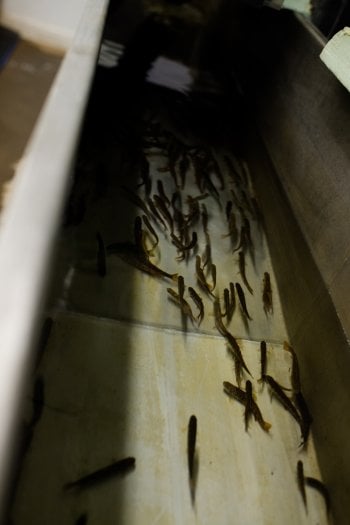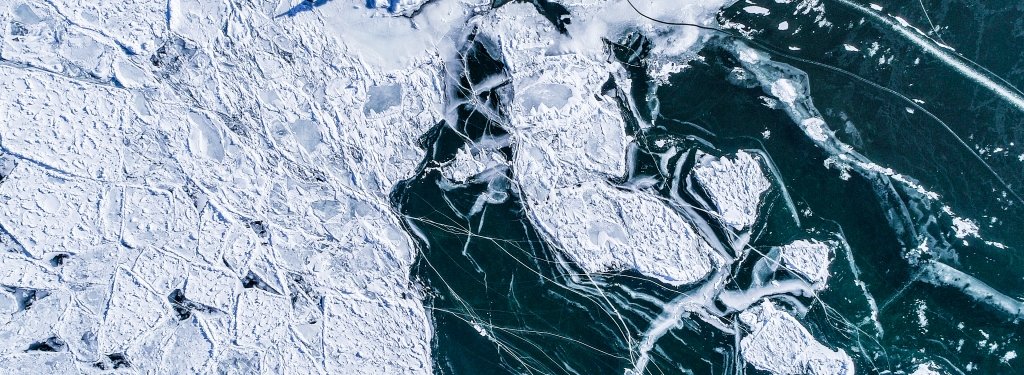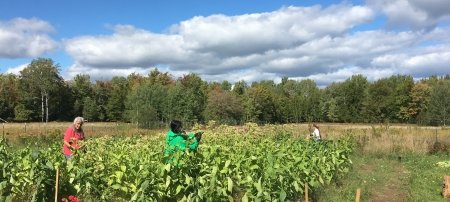Mercury, polychlorinated biphenyl (PCB) compounds, polycyclic aromatic hydrocarbons (PAHs) and persistent organic pollutants (POPs) make their way into Great Lakes fish. Chronic exposure is a problem for Indigenous communities.
Not many people think about fish consumption advisories. If they do, it's a quick glance at a map, a sobering reminder that invisible pollutants are still among us, a sideways look at a can of tuna, and then move on. But not all people have the luxury of occasionally eating smoked fish at a tourist stop and not considering contaminants in their food. Especially for fish-reliant tribal communities around the Great Lakes, fish consumption advisories are tied to present and future balancing acts around food choice. Eliminating the need for fish consumption advisories requires coordinated action at regional, national and international scales.
A team led by Michigan Technological University and Northwest Indian College released a policy brief outlining what it would take to create a future where fish consumption advisories are no longer needed in the Great Lakes region.
Their policy brief, available in full at mtu.edu/asep-policy, provides historical and cultural context, and is part of a larger transdisciplinary project focused on atmosphere-surface exchangeable pollutants (ASEPs). Mercury, PCB compounds, PAHs, POPs and other pollutants are tasteless ASEP chemicals that migrate around the world and are deposited through complex geochemical processes in the atmosphere, water bodies and land; mercury is a particular challenge in Michigan's Upper Peninsula.
Global ASEP pollution impacts local Great Lakes communities.
All 50 states, many Native American tribes, and federal agencies have established more than 4,000 fish consumption advisories in the United States; they're an important tool to help consumers make informed choices about where to fish and how much. But the policies established in the 1970s and beyond were meant to be temporary.
All 50 states, many Native American tribes, and federal agencies have established more than 4,000 fish consumption advisories in the United States; they're an important tool to help consumers make informed choices about where to fish and how much. But the policies established in the 1970s and beyond were meant to be temporary.

For the Keweenaw Bay Indian Community (KBIC), the Indigenous community that worked with the researchers studying ASEPs in the Great Lakes, fish consumption advisories that place limits on safe consumption raises the obvious question: When will it be safe to eat as much fish as one wants without having to worry about health effects? The practice is an important part of cultural identity and treaty rights, and because the KBIC and other fishing-reliant communities eat more fish than other people, they are more vulnerable to long-term exposure to the pollutants. On top of that, the KBIC as Anishinaabe people see themselves as stewards of the land and water.
For communities heavily dependent on fish consumption, "Advisories have been shown to have a minimal impact, especially when they impede tribal treaties and reserved fishing rights," says Valoree Gagnon, social scientist at Michigan Tech and one of the policy brief co-authors, adding that "birds do not read fish consumption advisories" and pollution knows no political boundaries.
Gagnon and her co-authors—Hugh Gorman, chair of the Department of Social Sciences at Michigan Tech, and Emma Norman, chair of the Native Environmental Science Program at Northwest Indian College—discuss six policy points to help overcome the obstacles in ASEP-related policy (refer to sidebar).
Connect policy frameworks and create a future where fish advisories are not needed.
The team's final policy point discusses global actions that could make a local difference for the KBIC and other vulnerable communities; their work focuses on the Great Lakes but is applicable for basins worldwide. Connecting those basins through coordinated actions is crucial. A simple example that is often overlooked in policy discussions is explicitly identifying the goal of eliminating the need for fish consumption advisories.

“It’s hard to pursue a goal when it’s not fully articulated,” Gorman says, adding that the goals will take multiple generations of commitment and will require the tools of adaptive governance to ensure that policies scale effectively.
As Gorman, Gagnon and Norman write, "the tools of adaptive governance are nested within the United States-Canada system of water quality governance for the Great Lakes. These tools help to ensure that lessons learned and research conducted in one cycle of action are integrated into the next iteration of strategy making." The key is taking those lessons and coordinating policies through regional, national and international frameworks.
Other tactics the team points to include supporting and strengthening existing efforts: global air monitoring—a better environmental indicator than fish tissue sampling—along with eliminating sources through adequate soil and sediment remediation, restricting POPs entering the marketplace and restricting mercury pollution with a planetary "Total Maximum Load" strategy. Another piece is developing consistent human health criteria worldwide to standardize how countries calculate exposure risk.
In total, the Great Lakes are not isolated from the rest of the world—mercury, POPs and other ASEPS are a global pollution problem that the team has examined through a local lens to better understand the impacts on Indigenous communities and other fish-reliant populations.
Michigan Technological University is an R1 public research university founded in 1885 in Houghton, and is home to nearly 7,500 students from more than 60 countries around the world. Consistently ranked among the best universities in the country for return on investment, Michigan's flagship technological university offers more than 185 undergraduate and graduate degree programs in science and technology, engineering, computing, forestry, business, health professions, humanities, mathematics, social sciences, and the arts. The rural campus is situated just miles from Lake Superior in Michigan's Upper Peninsula, offering year-round opportunities for outdoor adventure.





Comments